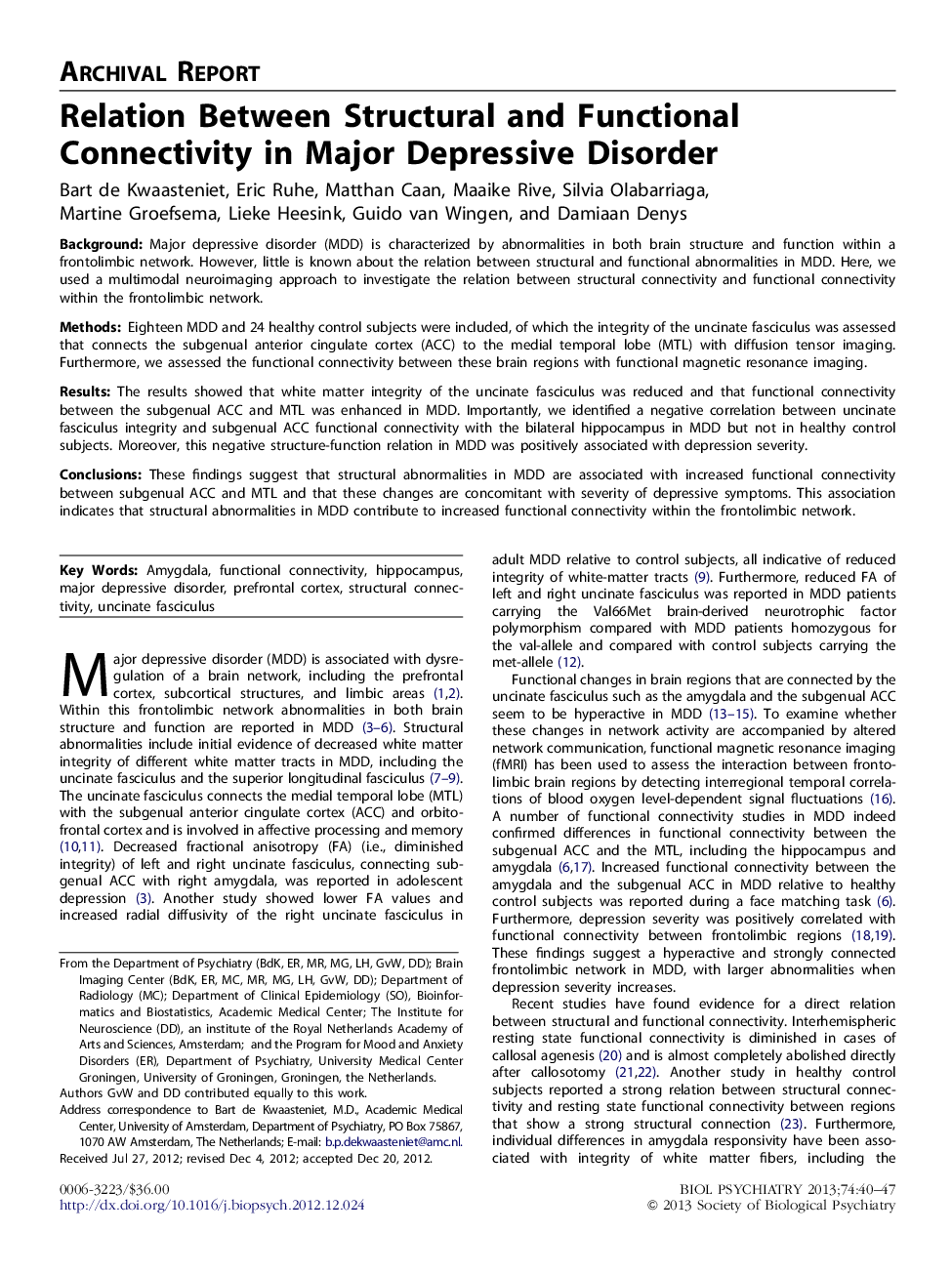| Article ID | Journal | Published Year | Pages | File Type |
|---|---|---|---|---|
| 4177623 | Biological Psychiatry | 2013 | 8 Pages |
BackgroundMajor depressive disorder (MDD) is characterized by abnormalities in both brain structure and function within a frontolimbic network. However, little is known about the relation between structural and functional abnormalities in MDD. Here, we used a multimodal neuroimaging approach to investigate the relation between structural connectivity and functional connectivity within the frontolimbic network.MethodsEighteen MDD and 24 healthy control subjects were included, of which the integrity of the uncinate fasciculus was assessed that connects the subgenual anterior cingulate cortex (ACC) to the medial temporal lobe (MTL) with diffusion tensor imaging. Furthermore, we assessed the functional connectivity between these brain regions with functional magnetic resonance imaging.ResultsThe results showed that white matter integrity of the uncinate fasciculus was reduced and that functional connectivity between the subgenual ACC and MTL was enhanced in MDD. Importantly, we identified a negative correlation between uncinate fasciculus integrity and subgenual ACC functional connectivity with the bilateral hippocampus in MDD but not in healthy control subjects. Moreover, this negative structure-function relation in MDD was positively associated with depression severity.ConclusionsThese findings suggest that structural abnormalities in MDD are associated with increased functional connectivity between subgenual ACC and MTL and that these changes are concomitant with severity of depressive symptoms. This association indicates that structural abnormalities in MDD contribute to increased functional connectivity within the frontolimbic network.
